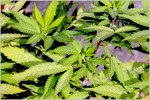
No bones about it: cannabis may be used to treat fractures, research group claims
 A non-psychotropic compound in marijuana can help heal bone fissures, says a new study in the Journal of Bone and Mineral Research.
A non-psychotropic compound in marijuana can help heal bone fissures, says a new study in the Journal of Bone and Mineral Research.
The study, conducted on rats with fractures in the thigh, found that cannabinoid cannabidiol (CBD) – even when isolated from tetrahydrocannabinol (THC), which is the major psychoactive component of cannabis – markedly enhanced the healing process of the bone after just eight weeks.
The same team previously found that cannabinoid receptors in our bodies stimulate bone formation and inhibit bone loss. They suggest that this paves the way for the future use of cannabinoid drugs to combat osteoporosis and other bone-related diseases.
“The clinical potential of cannabinoid-related compounds is simply undeniable at this point,” said Dr Yankel Gabet who is involved in the work. “While there is still a lot of work to be done to develop appropriate therapies, it is clear that it is possible to detach a clinical therapy objective from the psychoactivity of cannabis. CBD, the principal agent in our study, is primarily anti-inflammatory and has no psychoactivity.
“We found that CBD alone makes bones stronger during healing, enhancing the maturation of the collagenous matrix, which provides the basis for new mineralization of bone tissue. After being treated with CBD, the healed bone will be harder to break in the future.
“Other studies have also shown CBD to be a safe agent, which leads us to believe we should continue this line of study in clinical trials to assess its usefulness in improving human fracture healing.”
Click here to read the original reserach.
Subscribe to Arthritis Digest, the UK’s fastest growing arthritis magazine for all the latest arthritis news, reviews and celebrity interviews. You’ll know what your doctor is talking about, what new drugs are in the pipeline and be up to date on helpful products. Hard copy and digital versions both available. Click here for more information.
Image credit: M a n u e l
